How to Optimize Industrial Power Plant Boiler Performance for Lower Operating Costs
Industrial power plant boilers are the backbone of energy generation, converting fuel into steam to drive turbines and supply process heat. However, without continuous optimization, these systems can become fuel-inefficient, high-maintenance, and environmentally costly. Even small inefficiencies in combustion or heat transfer can lead to significant increases in operating costs over time. For plant operators, the key to long-term profitability lies in maximizing boiler performance across all operating conditions.
To optimize industrial power plant boiler performance for lower operating costs, focus on improving combustion control, minimizing excess air, recovering flue gas heat, maintaining clean heat transfer surfaces, using high-quality fuel, and implementing predictive maintenance strategies. Advanced digital monitoring and automation systems help fine-tune air-fuel ratios, adjust loads dynamically, and prevent unplanned downtime. Integrating these measures ensures better thermal efficiency, reduced emissions, and lower lifecycle costs.
Below is a strategic framework to enhance the performance and cost-efficiency of your power plant boiler system.
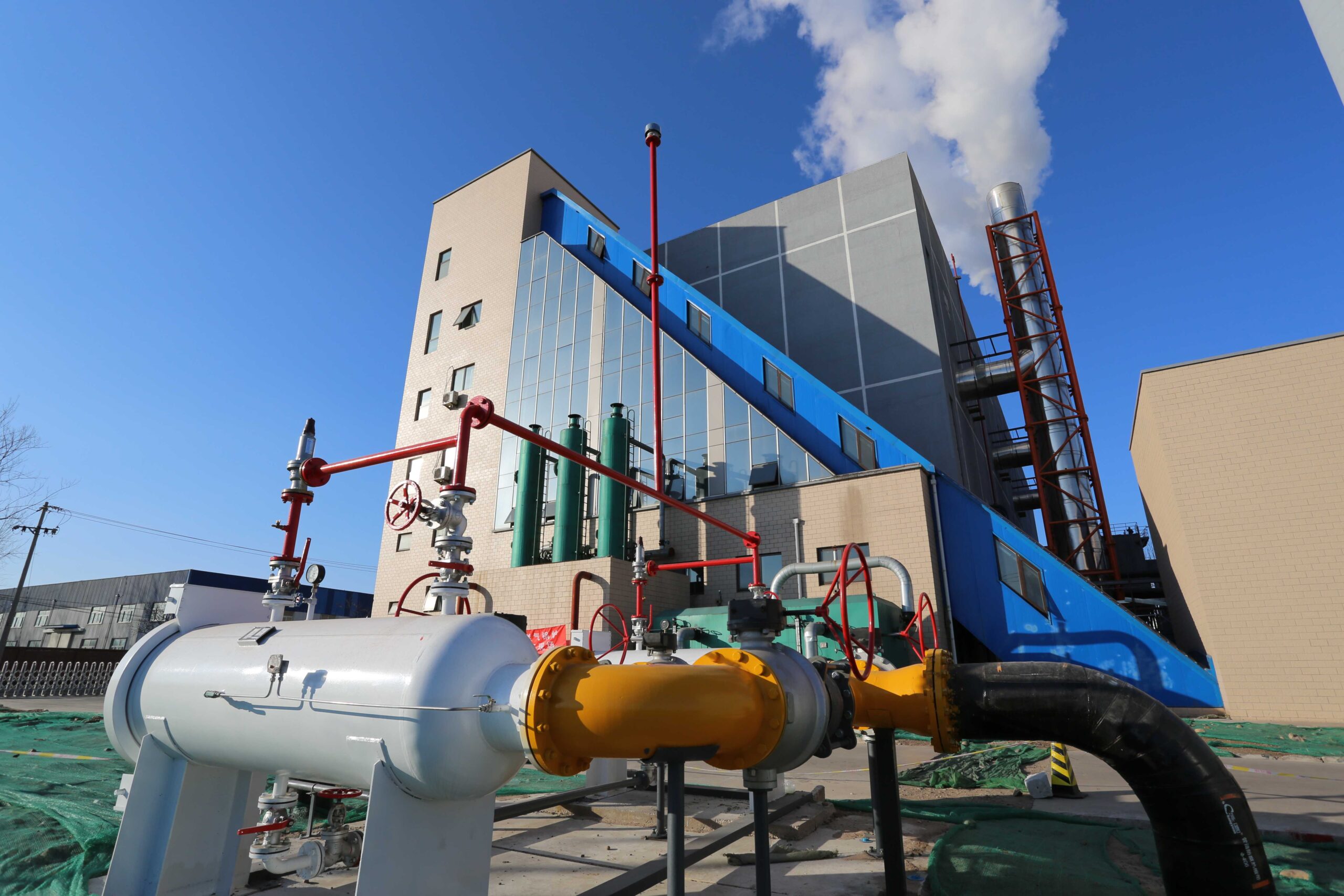
How Does Real-Time Air-Fuel Ratio Control Reduce Fuel Waste and Improve Combustion?
In combustion-based thermal systems, especially Circulating Fluidized Bed (CFB) boilers, maintaining the optimal air-to-fuel ratio (AFR) is fundamental to both efficiency and emissions control. Too much air cools the combustion zone and drives heat up the stack. Too little air results in incomplete combustion, CO formation, soot, and wasted fuel. But fuel types, moisture content, and boiler load conditions can change by the minute—which is why real-time AFR control is essential. It dynamically adjusts combustion airflow based on continuous feedback from O₂ sensors and load demand, resulting in cleaner, more efficient, and more cost-effective operations.
Real-time air-fuel ratio control reduces fuel waste and improves combustion by continuously adjusting combustion air flow to match the exact amount of fuel being burned. Using data from flue gas oxygen (O₂) sensors, control systems (typically PLC or DCS) fine-tune air inputs to maintain ideal combustion conditions, minimize excess air, and prevent unburned fuel. This reduces thermal losses in flue gases, improves heat transfer, lowers CO and NOₓ emissions, and enhances overall fuel-to-steam conversion efficiency. Real-time control prevents drift and compensates for fuel variability, often saving 5–10% in fuel costs annually.
In short: what doesn’t burn, wastes money. And only real-time control ensures everything burns just right.
Real-time air-fuel ratio control reduces fuel consumption by optimizing combustion efficiency and preventing excess air loss.True
Automated control systems adjust airflow based on oxygen feedback, eliminating overfeeding and improving heat transfer.
🔁 Why Real-Time AFR Control Matters
| Without Real-Time Control | With Real-Time Control |
|---|---|
| Excess air dilutes combustion | Air is modulated continuously |
| CO spikes from low O₂ | Stable oxygen window maintained |
| Soot buildup from fuel excess | Balanced burn = less residue |
| Manual setpoints drift over time | Adaptive response to changing loads |
| Efficiency drops over weeks | Efficiency optimized hourly |
Static AFR settings don’t account for fuel fluctuations, moisture changes, or dynamic boiler loads.
📉 Fuel Waste from Improper AFR
| AFR Condition | Common Issue | Fuel Impact | Emissions Impact |
|---|---|---|---|
| Too much air (excess O₂ > 6%) | Heat lost in flue gas | +5–10% usage | Lower CO, higher NOₓ |
| Too little air (O₂ < 2%) | Incomplete combustion, soot | +8–15% usage | Higher CO, unburned HC |
| Balanced AFR (O₂ ~3–4%) | Optimal burn, clean flame | Baseline | Low NOₓ, low CO |
Each 1% increase in excess oxygen can reduce boiler efficiency by 0.5% or more.
🧪 Case Study: 80 TPH Biomass CFB Boiler with AFR Automation
| Condition | Before AFR Control | After AFR Optimization |
|---|---|---|
| Average Stack O₂ | 6.5% | 3.8% |
| Fuel Use (tons/year) | 34,500 | 31,300 |
| Steam Output (GWh) | 650 | 650 |
| Efficiency | 73% | 78% |
| Annual Fuel Savings | — |
Oxygen trim systems in biomass and CFB boilers can reduce fuel use by 5% or more.True
By minimizing excess air, the system retains more combustion heat and reduces waste.
⚙️ Key Components of Real-Time AFR Control
| Component | Function |
|---|---|
| Oxygen Sensor (Zirconia type) | Measures flue gas O₂ for feedback |
| Fuel Flow Meter | Tracks biomass or coal input rate |
| Primary/Secondary Air Fans | Modulated by control loop |
| Combustion Controller (PLC/DCS) | Calculates and adjusts AFR |
| SCADA Interface | Operator interface for setpoint review |
| Data Logger/Alarm System | Alerts for high CO or O₂ drift |
Systems may also include CO sensors, temperature probes, and flue pressure gauges for holistic control.
📋 Best Practices for AFR Optimization
| Practice | Benefit |
|---|---|
| Calibrate O₂ sensors monthly | Prevents drift and false readings |
| Use high-resolution actuators | Improves air valve accuracy |
| Link AFR to load forecasts | Preemptively adjusts to demand shifts |
| Monitor CO alongside O₂ | Detects incomplete combustion early |
| Automate fan modulation (VFDs) | Fine-grain control = better response |
Facilities with SCADA + AFR control see 10–25% fewer flameouts, shutdowns, and stack emissions spikes.
📈 AFR vs. Boiler Efficiency Graph
| O₂ Level (%) | Estimated Boiler Efficiency (%) |
|---|---|
| 2.0% | 85–87% |
| 3.5% | 83–85% |
| 5.0% | 80–82% |
| 6.5% | 77–79% |
| 8.0% | <75% |
Real-time control ensures O₂ remains within the optimal 3–4% range, minimizing fuel and heat loss.
Summary
Real-time air-fuel ratio control is a powerful tool for fuel efficiency, emission reduction, and combustion stability in CFB boilers. By continuously adjusting air input based on sensor feedback, these systems prevent excess air waste, avoid unburned fuel losses, and keep emissions within compliance. Over time, this leads to 5–15% savings in fuel cost, cleaner heat transfer surfaces, and fewer operational interruptions. In modern energy systems, combustion isn’t set-and-forget—it’s real-time and responsive. For plant operators and energy managers, smart AFR control means burning less and earning more.
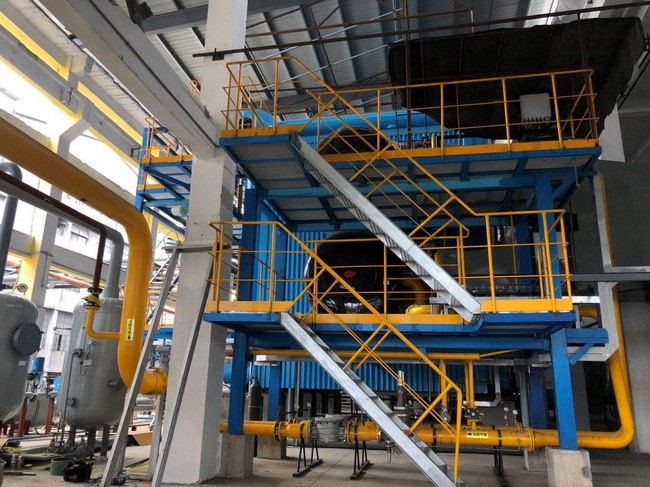
Why Is Soot Blowing and Ash Management Essential for Maintaining Heat Transfer Efficiency?
In Circulating Fluidized Bed (CFB) boilers, efficient combustion alone isn’t enough to guarantee performance—heat must be effectively transferred from flue gas to steam. But as biomass, coal, or waste fuels burn, they leave behind soot and ash—fine particles that cling to heat exchanger surfaces like the furnace walls, superheaters, and economizers. If not managed regularly through soot blowing and ash removal, these deposits act like insulation, dramatically reducing thermal conductivity. The result is higher flue gas temperatures, lower boiler efficiency, and increased fuel consumption. That’s why proactive soot and ash control is essential for sustaining energy output and economic performance.
Soot blowing and ash management are essential for maintaining heat transfer efficiency in CFB boilers because ash and soot deposits insulate heat exchanger surfaces, reducing the ability of hot flue gases to transfer energy to water or steam. These deposits increase flue gas exit temperatures and reduce boiler thermal efficiency by 5–15% or more. Soot blowing removes loose and semi-adherent particles using high-pressure steam or air, while ash handling systems continuously or periodically evacuate ash from the furnace, cyclones, and filters. Consistent cleaning prevents fouling, preserves fuel efficiency, and reduces the risk of corrosion and tube failure.
The more buildup you let linger, the more money and efficiency you lose.
Soot and ash buildup on heat transfer surfaces can reduce CFB boiler efficiency by 10% or more if not regularly removed.True
Deposits act as thermal insulators, causing higher stack temperatures and forcing more fuel to be burned to achieve the same output.
🔥 Where Fouling Occurs in CFB Boilers
| Location | Fouling Type | Resulting Impact |
|---|---|---|
| Superheater Banks | Fine ash, slagging | Reduces steam temperature, pressure |
| Economizer Tubes | Sticky soot, sintered ash | Raises stack temperature, lowers heat recovery |
| Furnace Water Walls | Clinker, fused ash | Hot spots, uneven heat flux |
| Cyclone/Separator | Ash plugging, erosion | Flow imbalance, wear, pressure loss |
| Air Preheater (APH) | PM coating, fly ash | Reduces combustion air temp |
High-ash fuels like rice husk or RDF foul faster, requiring more frequent soot blowing cycles.
📉 Impact of Fouling on Efficiency
| Fouling Thickness | Stack Temp Increase | Efficiency Drop | Fuel Cost Increase |
|---|---|---|---|
| 0.5 mm | +15–20°C | -2–3% | +3–5% |
| 1.0 mm | +35–50°C | -5–8% | +6–10% |
| 2.0 mm or more | +70–100°C | -10–15% | +10–20% |
Each 1% drop in thermal efficiency raises fuel cost by ~$10,000–$25,000/year in a 100 TPH boiler.
🧪 Case Study: 60 TPH CFB Boiler, Agro-Waste Fuel
Problem:
Stack temperature rose from 190°C to 245°C
Steam output declined 9%
Fuel usage increased by 11%
Manual inspection found 1.5mm ash coating on superheater
Action Taken:
Performed aggressive soot blowing and economizer washing
Reprogrammed automatic soot blower for shorter intervals
Result:
Stack temp dropped to 185°C
Fuel savings:
900 tons/year ($70,000)Steam output normalized
Soot blowing at regular intervals restores surface cleanliness and recovers boiler efficiency.True
Removing soot prevents thermal resistance buildup and enables optimal heat transfer from flue gas to steam.
⚙️ Soot Blowing & Ash Handling Methods
| Method | Purpose | Frequency |
|---|---|---|
| Automatic Soot Blowing | Steam/air jets clean tube surfaces | Hourly to daily |
| Manual Lance Blowing | Targeted cleaning of fouled areas | Weekly to monthly |
| Online Ash Discharge | Continuous furnace ash removal | Continuous |
| Cyclone Dust Removal | Collects coarse fly ash | Continuous or periodic |
| Economizer Water Washing | Chemical or water-based tube rinse | Every 1–3 months |
Integration with control systems allows soot blowing to respond to ΔT readings or pressure drop thresholds.
📋 Best Practices for Heat Transfer Surface Cleanliness
| Practice | Benefit |
|---|---|
| Install ΔT sensors across heat exchangers | Detects early signs of fouling |
| Program adaptive soot blowing intervals | Matches cleaning to real conditions |
| Use soot blower path maps | Ensures even surface coverage |
| Check ash flow in ducts and bins | Prevents backpressure and hot spots |
| Analyze fly ash composition | Predicts fouling behavior by fuel type |
📈 Cleaning Cycle vs. Fuel Efficiency Chart
| Soot Blowing Frequency | Fouling Accumulation | Efficiency Trend |
|---|---|---|
| Daily | Minimal buildup | Stable |
| Weekly | Moderate fouling | 3–5% drop |
| Monthly | Heavy fouling risk | 8–15% drop |
| As-needed only | Severe risk | Unpredictable, high loss |
Automated systems with smart timing save more fuel than fixed manual schedules.
Summary
Soot blowing and ash management are not just maintenance routines—they are direct drivers of combustion efficiency and fuel economy in CFB boilers. By keeping heat exchanger surfaces clean, operators ensure that every calorie of fuel is effectively converted to steam, not lost up the stack. Ash control prevents blockages, hot spots, and premature wear, while optimized soot blowing maintains stable thermal performance. Over time, facilities that invest in proper cleaning and ash strategies recover efficiency, reduce fuel costs, and avoid expensive downtime. When it comes to thermal performance, a clean boiler is a profitable boiler.
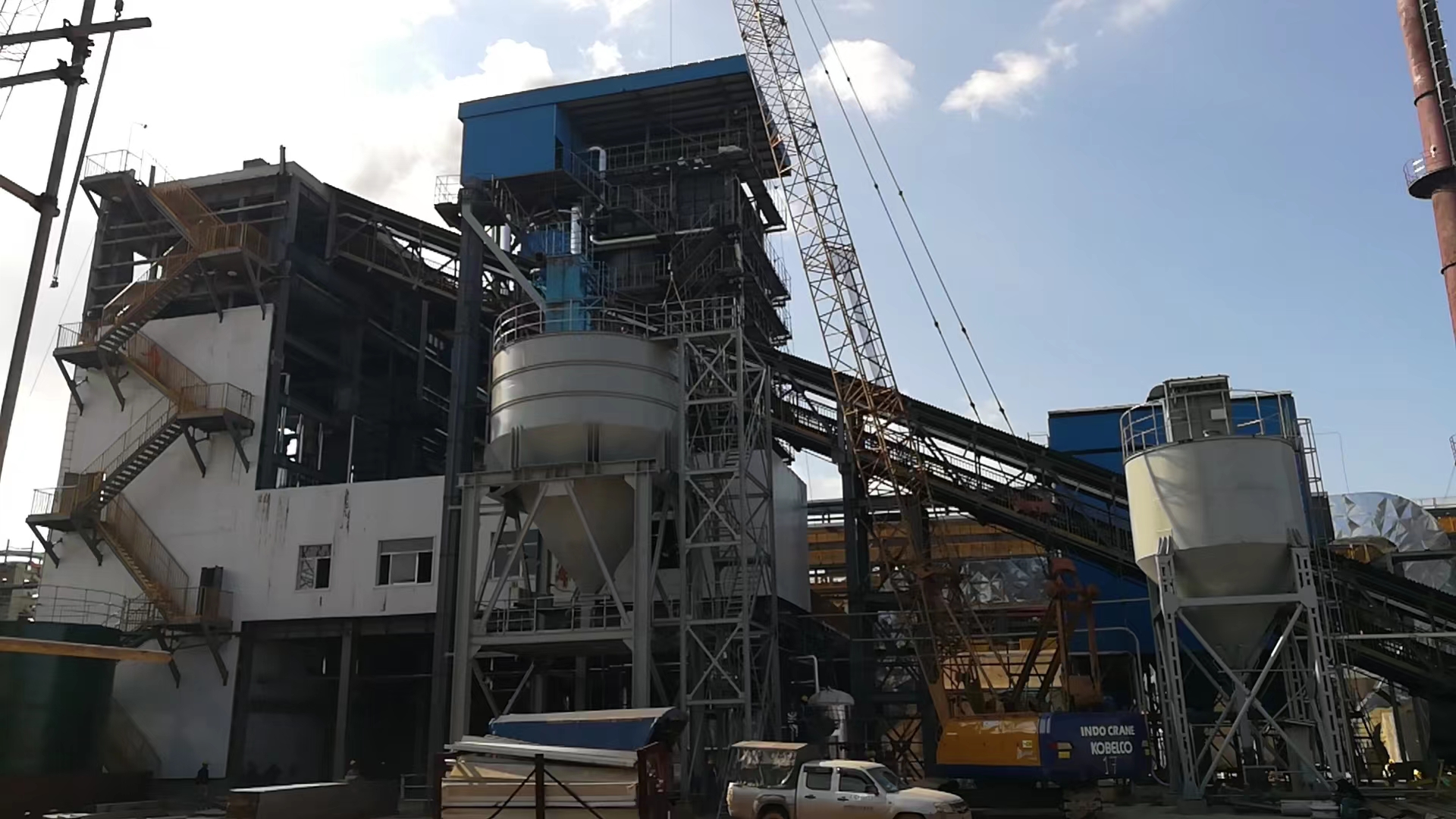
What Role Does Flue Gas Heat Recovery (e.g., Economizers and Air Preheaters) Play in Lowering Energy Losses?
Every unit of fuel burned in a CFB boiler releases a massive amount of energy—yet in conventional systems, 20%–30% of that energy escapes through flue gas losses. These high-temperature exhaust gases carry residual heat that, if left unrecovered, drives up fuel consumption and operating costs. That’s where flue gas heat recovery technologies—like economizers and air preheaters (APH)—come into play. By capturing waste heat from the flue gas stream and redirecting it into boiler feedwater or combustion air, these devices reduce stack losses, improve thermal efficiency, and lower fuel usage, often with simple payback periods of less than three years.
Flue gas heat recovery systems—particularly economizers and air preheaters—lower energy losses in CFB boilers by capturing waste heat from hot exhaust gases and transferring it to incoming feedwater and combustion air. This process raises the temperature of these boiler inputs, reducing the amount of fuel required to reach steam generation or flame temperature targets. As a result, stack temperature is lowered, boiler efficiency increases by 5–10%, and fuel consumption drops by 8–15%. These systems maximize energy utilization, reduce emissions, and enhance ROI across the boiler lifecycle.
The hottest part of your plant shouldn’t be the flue—and recovery systems make sure it isn’t.
Economizers and air preheaters reduce energy losses by recovering heat from flue gases and improving boiler input temperatures.True
They minimize the temperature differential between exhaust and input streams, reducing the fuel required for combustion and steam generation.
🌡️ How Heat Is Lost—and Recovered—in CFB Boilers
| Energy Path | Without Heat Recovery | With Economizer/APH |
|---|---|---|
| Flue Gas to Stack | 220–300°C lost to atmosphere | Cooled to 140–180°C |
| Feedwater Input Temp | 50–70°C | Raised to 90–120°C |
| Combustion Air Temp | Ambient (25–30°C) | Heated to 100–160°C |
| Net Efficiency | ~72–75% | Improved to ~78–84% |
A drop of 10–15°C in stack temperature = ~0.5% gain in efficiency.
📊 Fuel Savings Through Heat Recovery
| Boiler Size (TPH) | Typical Flue Gas Heat Loss (kcal/hr) | Savings via Heat Recovery (%) | Annual Fuel Savings (USD) |
|---|---|---|---|
| 10 TPH | ~2.2M kcal/hr | 6–9% | $20,000–$40,000 |
| 50 TPH | ~11M kcal/hr | 7–10% | $80,000–$130,000 |
| 100 TPH | ~22M kcal/hr | 8–12% | $150,000–$250,000 |
| 150 TPH | ~33M kcal/hr | 9–13% | $250,000–$400,000 |
Based on biomass at $80/ton, operating 7,500 hours/year.
🔁 What Economizers and Air Preheaters Do
| System Component | Function | Target Heat Stream | Primary Benefit |
|---|---|---|---|
| Economizer | Preheats boiler feedwater using flue gas | Increases input temp to drum | Lowers fuel need for steam |
| Air Preheater (APH) | Warms combustion air using flue gas | Increases flame temp | Improves combustion efficiency |
| Condensing Economizer | Recovers latent heat from moisture | For low-temp flue gas streams | Maximizes recovery efficiency |
Economizers typically operate in the 180–350°C range; APHs work with cleaner gas and lower corrosion risk.
🧪 Case Study: 100 TPH Biomass-Fired CFB with Heat Recovery
| Parameter | Before Heat Recovery | After Economizer + APH |
|---|---|---|
| Stack Temp | 245°C | 165°C |
| Feedwater Temp | 65°C | 105°C |
| Air Inlet Temp | 30°C | 135°C |
| Boiler Efficiency | 74.2% | 82.6% |
| Fuel Savings (tons/year) | — | ~3,500 |
| Fuel Cost Reduction | — | ~$280,000/year |
📋 Integration Considerations for Recovery Systems
| Consideration | Economizer | Air Preheater |
|---|---|---|
| Fouling Risk | High with biomass ash | Moderate (cleaner air path) |
| Corrosion Potential | High if flue gas < dewpoint | Less risk if hot air path used |
| Space Requirement | Large | Medium |
| Cleaning Mechanism | Soot blowing required | Rotating or static vanes |
| Material Selection | Stainless or alloy | Mild steel acceptable |
Recovery units must be designed for specific ash content, gas velocity, and temperature window.
📈 Efficiency Gain vs. Stack Temperature Drop
| Stack Exit Temp (°C) | Boiler Efficiency (%) |
|---|---|
| 280°C | 72% |
| 240°C | 74% |
| 200°C | 77% |
| 160°C | 80% |
| 140°C | 82%+ |
Every 10–15°C stack temperature drop is worth 0.5–1% in thermal gain.
Summary
Flue gas heat recovery through economizers and air preheaters is one of the most cost-effective and proven strategies to improve energy efficiency in CFB boiler systems. These devices reclaim waste heat from exhaust gases and redirect it into the boiler’s feedwater and combustion air—reducing fuel requirements, emissions, and stack losses. Over time, this translates into 8–15% fuel savings, faster ROI, and more sustainable operations. For any high-capacity boiler system, capturing what you already paid to heat is the smartest energy savings you can make.
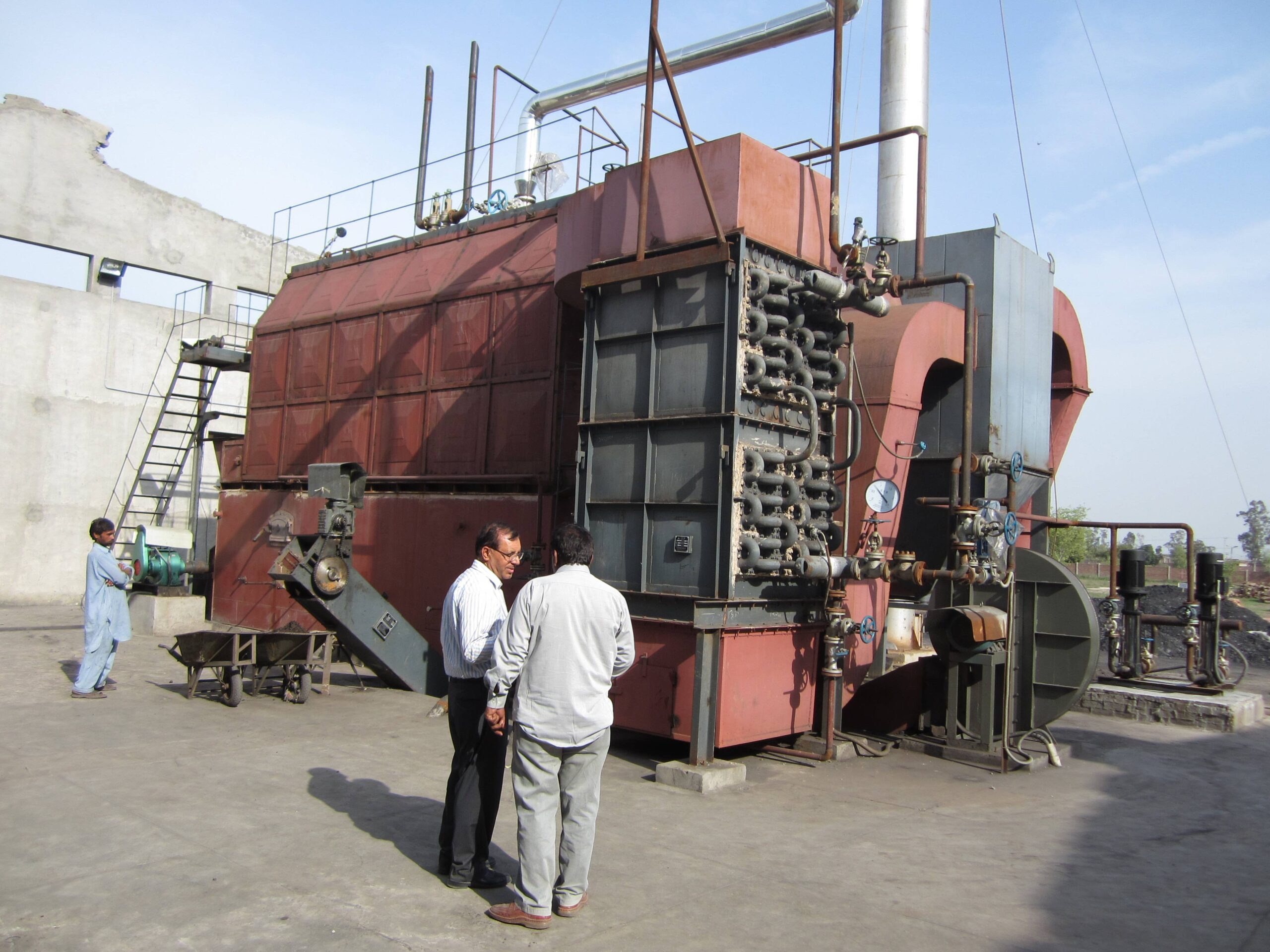
How Can Boiler Load Management and Dynamic Scheduling Optimize Fuel Consumption?
Boilers are most efficient when running near their design load, but in the real world, steam demand fluctuates. When Circulating Fluidized Bed (CFB) boilers operate under part-load or experience frequent startups and shutdowns, combustion becomes less stable, heat losses increase, and fuel efficiency drops. The solution lies in intelligent boiler load management and dynamic scheduling—a strategy that uses real-time demand forecasting, automation, and system coordination to ensure boilers run at optimal levels, avoid inefficient cycling, and minimize fuel waste across varying operational conditions.
Boiler load management and dynamic scheduling optimize fuel consumption by aligning steam generation output with real-time demand, minimizing load swings, and ensuring boilers operate at their most efficient range. Through automated control systems, predictive load forecasting, and coordinated operation of multiple boilers, plants can reduce part-load operation, avoid excessive fuel usage during low efficiency periods, and eliminate energy waste from frequent starts and stops. This strategy improves fuel-to-steam conversion efficiency, reduces emissions, and lowers operating costs—especially in multi-boiler or variable-load environments.
The smartest boiler isn’t the one that runs the hardest—it’s the one that runs exactly when and how it should.
Dynamic boiler load scheduling improves fuel efficiency by minimizing operation at inefficient part-load conditions.True
Boilers have an optimal load range; operating outside this range causes fuel waste and combustion instability.
🔁 The Problem With Poor Load Management
| Load Condition | Common Issues | Fuel Impact |
|---|---|---|
| Low Load Operation | Flame instability, excess air use | +5–12% fuel waste |
| Short Cycling | Frequent start/stop heat loss | +10–20% fuel loss |
| Peak Overshoot | Over-firing, inefficient spike | Fuel inefficiency, emissions spikes |
| Uncoordinated Multi-Boiler | Sub-optimal lead/lag operation | Mixed efficiency, redundancy waste |
Ideal efficiency occurs at 70–90% of rated boiler load. Below 50%, efficiency drops sharply.
📉 Fuel Efficiency vs. Boiler Load
| Load (%) | Typical Efficiency (%) | Fuel Efficiency Drop |
|---|---|---|
| 100% | 83–85% | — |
| 80% | 82–84% | Minimal |
| 60% | 78–80% | Moderate |
| 40% | 72–75% | High loss |
| <30% | <70% | Severe inefficiency |
Boilers running below 50% load typically consume 15–25% more fuel per unit of steam.
🧪 Case Study: 3-Boiler System with Smart Load Scheduling
Scenario:
Three CFB units: 60 TPH each
Variable demand between 60–150 TPH (industrial cluster)
Previously ran all boilers partially loaded
Upgraded to automated lead-lag controller with predictive logic
Results:
Boilers 1 & 2 prioritized, 3 used only for peak backup
Maintained each online unit at 75–85% load
Fuel use reduced by ~8.7%
Annual savings: ~$180,000
Reduced thermal stress and maintenance events
Coordinated multi-boiler load management significantly improves system efficiency and reduces fuel cost.True
Instead of running all boilers under low load, the system rotates operation to keep fewer units in optimal load range.
⚙️ Tools for Dynamic Load Scheduling
| Tool/System | Function | Optimization Impact |
|---|---|---|
| SCADA/PLC Integration | Centralized control of boiler outputs | Real-time response to load |
| Steam Demand Forecasting Software | Predicts hourly/daily load trends | Pre-adjusts boiler allocation |
| Lead-Lag Controllers | Prioritize boilers based on runtime/load | Avoids inefficiency in rotation |
| Load Shedding Protocols | Drop non-critical loads during spikes | Keeps boilers in best range |
| Energy Management System (EMS) | Full plant energy cost tracking | Informs load distribution |
Integration with production systems allows boiler controls to anticipate demand, not just react.
📋 Best Practices for Load Management
| Practice | Benefit |
|---|---|
| Avoid low-load boiler operation | Keeps units in efficient combustion zone |
| Run fewer boilers at higher load | Improves steam-to-fuel ratio |
| Rotate lead boilers weekly | Distributes wear and maintenance |
| Use forecast-based preheating | Reduces fuel needed during ramp-up |
| Monitor efficiency by load range | Supports operational tuning |
Tracking efficiency by load level helps identify when to shut down or bring on additional units.
📈 Dynamic Scheduling vs. Static Scheduling
| Metric | Static Scheduling | Dynamic Load Control |
|---|---|---|
| Efficiency | Variable, often sub-optimal | Maintained near peak |
| Fuel Consumption | High during low demand | Lower and predictable |
| Boiler Wear | Uneven, random | Even distribution |
| Operational Control | Manual and delayed | Automated, proactive |
| Downtime/Shutdown Events | Frequent due to inefficiency | Reduced significantly |
Summary
Boiler load management and dynamic scheduling are powerful strategies for maximizing fuel efficiency and operational stability in CFB boiler systems. By aligning output with real-time demand and distributing load intelligently across multiple units, plants can avoid the inefficiencies of part-load operation and fuel-heavy cycling. The result is lower operating costs, better combustion control, and longer equipment life. In modern energy systems, the most efficient boiler isn’t the biggest or newest—it’s the one that’s scheduled smart, tuned right, and loaded to perform.
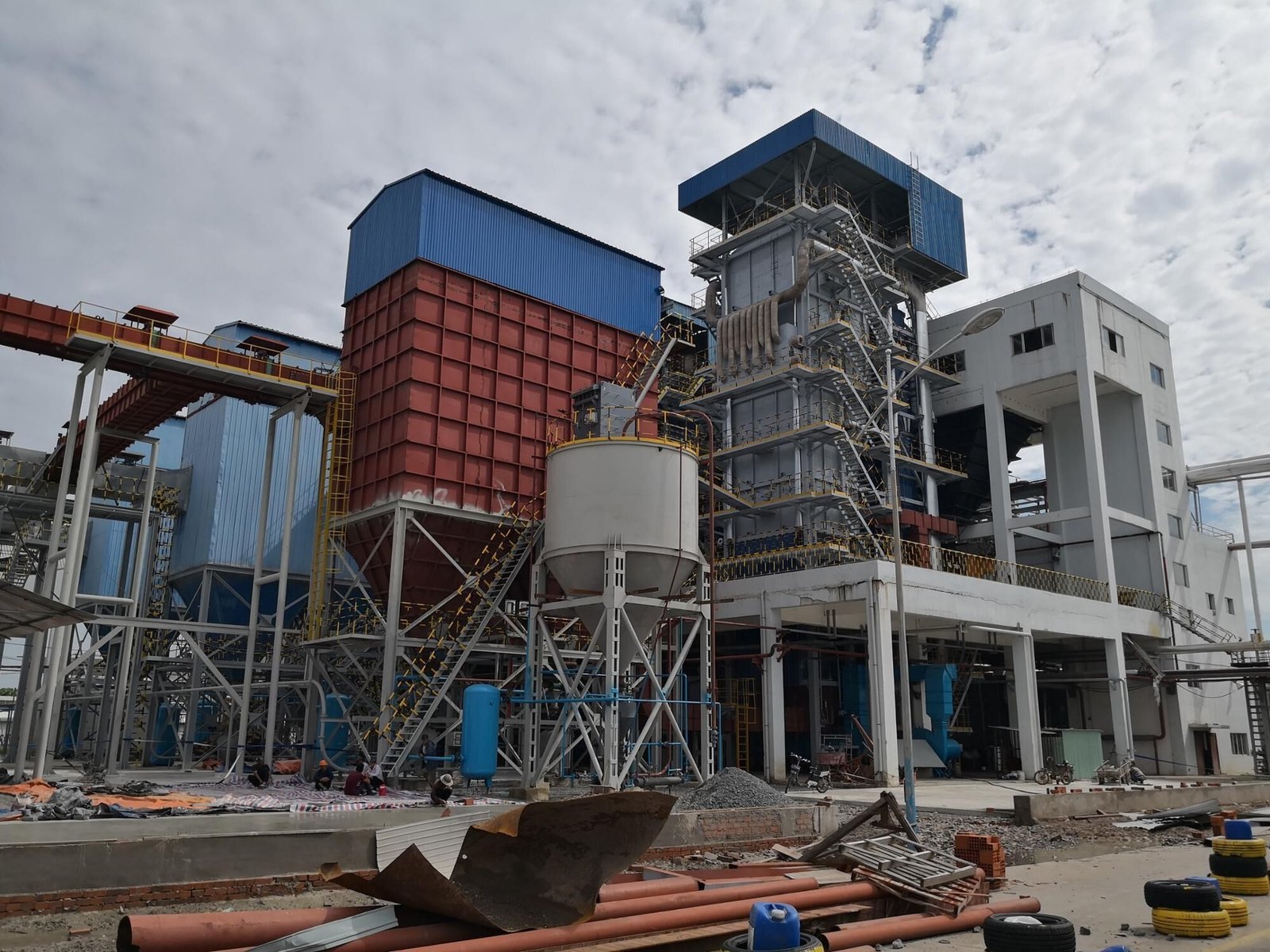
How Do Digital Controls, Sensors, and Automation Systems Improve Operational Precision in Industrial Power Plant Boilers?
Industrial power plant boilers are critical assets in energy production, designed to operate under extreme conditions where even slight inefficiencies translate into significant cost and performance penalties. These systems burn vast amounts of fuel daily, and their complexity makes manual oversight difficult, error-prone, and slow to react to dynamic load conditions. To meet today’s demands for energy efficiency, emissions compliance, and operational consistency, facilities rely on digital controls, advanced sensors, and automation systems. These technologies form the backbone of modern boiler optimization, enabling real-time precision and system-wide intelligence across fuel, air, steam, and emissions flows.
Digital controls, sensors, and automation systems improve operational precision in industrial power plant boilers by continuously monitoring key performance indicators and automatically adjusting critical operating parameters such as air-fuel ratio, steam temperature, pressure, and combustion airflow. This real-time optimization reduces human error, maintains stable boiler performance, and ensures efficient and compliant operation. Automated control systems—typically based on PLCs, DCS, and SCADA platforms—react faster than manual input, keep boiler systems within tight tolerances, and extend equipment life through predictive control strategies.
In the world of industrial steam generation, precision equals performance—and automation makes that precision possible.
Automation and digital controls significantly enhance the precision and reliability of industrial boiler operation.True
They respond to system changes instantly, maintain optimal setpoints, and prevent operational drift and human error.
⚙️ Key Roles of Digital Controls and Automation in Boiler Systems
| Function Area | Automation Impact | Operational Benefit |
|---|---|---|
| Air-Fuel Ratio Control | Real-time O₂ sensor feedback loop | Maintains combustion efficiency |
| Steam Pressure Regulation | PID loop based on demand/load | Avoids overshoot, stabilizes turbine input |
| Flame Monitoring | Optical/IR sensors with safety interlocks | Prevents flameout, improves burner control |
| Feedwater Management | Level sensors and control valves | Protects steam drum, ensures safe operation |
| Burner Management System (BMS) | Coordinates ignition and fuel sequencing | Enhances safety, reduces startup losses |
| Emissions Monitoring (CEMS) | Tracks SO₂, NOₓ, CO in real time | Ensures compliance and allows adaptive tuning |
Automation allows the boiler to maintain optimal efficiency even under fluctuating loads and variable fuel conditions.
📊 Performance Comparison: Manual vs. Automated Operation
| Parameter | Manual Control | Digital/Automated Control |
|---|---|---|
| O₂ Stability | ±2.5% | ±0.3% |
| Steam Pressure Fluctuation | ±3 bar | ±0.5 bar |
| Fuel Consumption Variance | 6–12% drift | <3% from target |
| Operator Intervention Rate | High | Minimal |
| Emissions Compliance | Inconsistent | Continuous, real-time |
Real-time precision reduces fuel use, emissions spikes, and mechanical stress on the boiler.
🧪 Case Study: Automation Upgrade in a 250 MW Coal-Fired Power Plant
Before Automation:
Manual air and fuel flow adjustments
Stack O₂ drifted between 5%–8%
Frequent pressure swings affected turbine performance
After Automation:
Integrated DCS with real-time sensor feedback
O₂ maintained at 3.6% ± 0.2%
Turbine pressure stabilized within 0.3 bar
Fuel savings:
2.8% annually ($900,000/year)NOₓ reduced by 19%, improved compliance margin
Digital automation allows industrial power boilers to respond to load changes with minimal delay, improving operational continuity.True
These systems monitor inputs continuously and adjust actuators instantly to maintain ideal operating conditions.
🔍 Sensors That Drive Operational Precision
| Sensor Type | Monitored Parameter | Precision Impact |
|---|---|---|
| Zirconia O₂ Sensor | Flue gas oxygen | Enables precise air-fuel ratio tuning |
| Thermocouple/RTD | Combustion/flue temp | Protects tubes, enhances heat control |
| Pressure Transducers | Drum, steam, and header pressure | Maintains stable steam supply |
| Level Sensors | Feedwater/drum levels | Prevents surging and dry-out risks |
| Flow Meters (Mass/DP) | Air, steam, fuel | Optimizes combustion, heat rate |
| Vibration & Condition Sensors | Fans, motors, pumps | Detects wear before failure |
These sensors form the “nervous system” of modern boiler operation—detecting deviations before damage occurs.
📋 Best Practices for Implementation
| Best Practice | Operational Outcome |
|---|---|
| Integrate SCADA with DCS/PLC | Unified control and monitoring |
| Use redundant sensors for critical loops | Improves reliability and failover |
| Configure tight alarm thresholds | Enables fast intervention |
| Log and trend key parameters | Supports diagnostics and tuning |
| Implement predictive maintenance algorithms | Reduces downtime and repair costs |
With precise control and real-time data, every input—from fuel to water—is used more efficiently and safely.
Summary
Digital controls, sensors, and automation platforms are essential for achieving operational precision in industrial power plant boilers. These technologies deliver faster, more accurate, and more consistent performance by maintaining critical process parameters within narrow bands—24/7, regardless of load fluctuations or fuel variability. Whether it’s optimizing combustion, ensuring emissions compliance, or protecting high-pressure systems, digital automation enables smarter decisions and safer, more efficient operation. In today’s industrial energy landscape, digital precision isn’t optional—it’s the foundation of excellence.
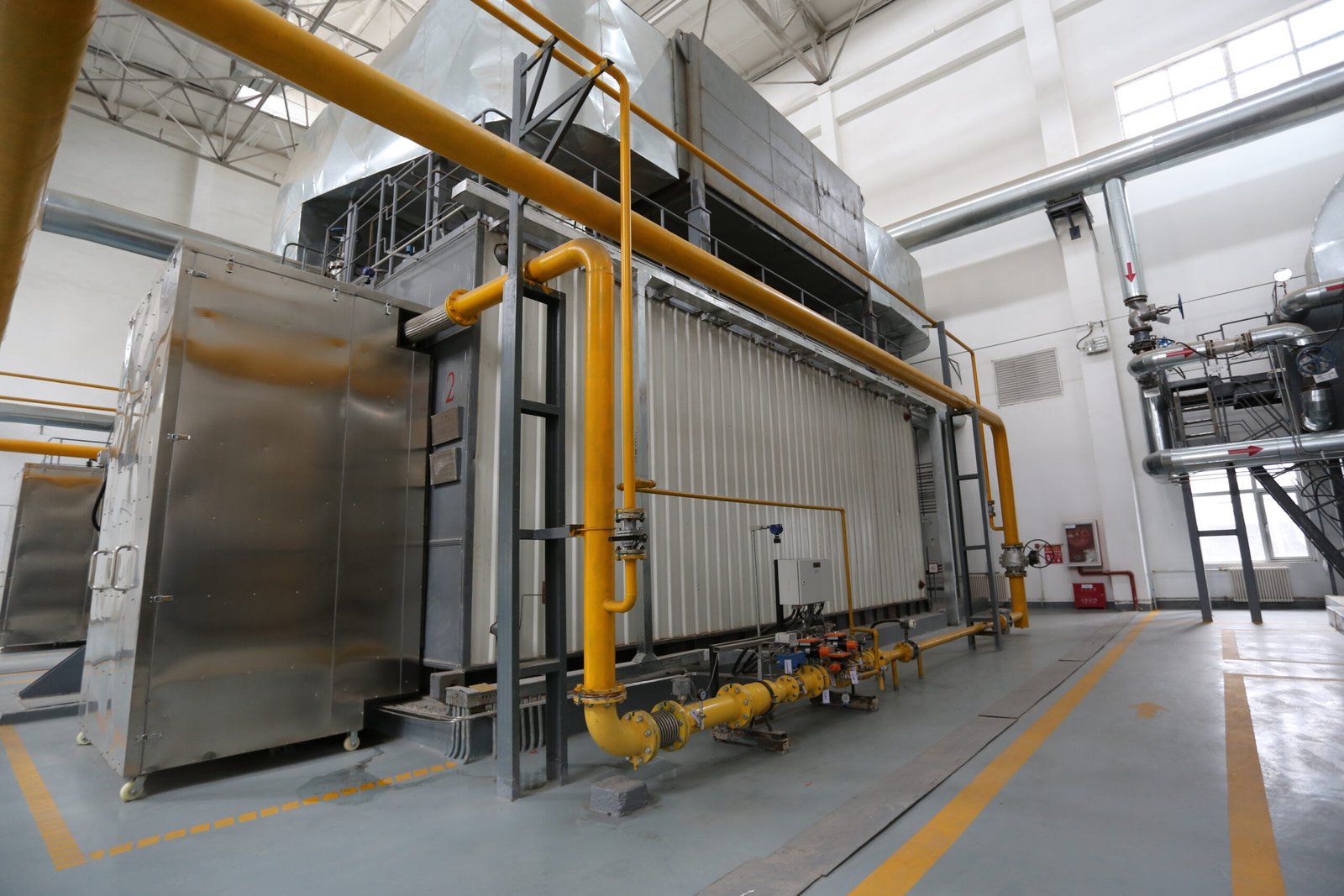
What Predictive Maintenance and Inspection Practices Reduce Downtime and Repair Costs in Industrial Power Plant Boilers?
In high-capacity industrial power plant boilers, unplanned shutdowns don’t just disrupt operations—they trigger cascading losses in power generation, contractual penalties, and emergency repair bills that can stretch into the millions. These systems operate under high pressure, high temperature, and fuel variability, making them vulnerable to tube leaks, refractory failures, erosion, fouling, and sensor drift. Traditional scheduled maintenance often misses these issues until they become critical. That’s why many operators now turn to predictive maintenance and diagnostic inspection techniques to identify early signs of degradation and prevent major failures—cutting downtime, optimizing maintenance schedules, and significantly reducing repair costs.
Predictive maintenance and inspection practices reduce downtime and repair costs in industrial power plant boilers by using real-time monitoring, trend analysis, and diagnostic tools to identify equipment deterioration before it leads to failure. Techniques such as ultrasonic testing, thermal imaging, vibration analysis, and chemical monitoring allow for early detection of issues like tube thinning, refractory cracks, bearing wear, and fouling. These data-driven practices help plants schedule maintenance at the optimal time, reduce emergency shutdowns, extend asset life, and lower lifecycle repair expenses by 20–40%.
The best time to fix a problem is before it becomes one—and predictive strategies make that possible.
Predictive maintenance in industrial power boilers prevents unexpected failures and cuts downtime by enabling timely, targeted interventions.True
It uses condition monitoring, inspections, and historical trend data to catch early degradation before it causes system-wide issues.
🔍 Key Predictive Maintenance Techniques for Power Boilers
| Method | What It Detects | Application Frequency |
|---|---|---|
| Ultrasonic Thickness Testing (UTT) | Tube thinning, corrosion | Semi-annually or annually |
| Thermal Imaging (IR Cameras) | Hot spots, refractory damage, insulation loss | Monthly or quarterly |
| Vibration Monitoring | Misalignment, bearing wear (fans, motors) | Continuous or monthly |
| Oil & Grease Analysis | Contaminants, metallic particles | Quarterly |
| Acoustic Emission Testing | Leak detection in tubes/valves | Scheduled or on-demand |
| Steam Purity/Water Chemistry Monitoring | Scaling, corrosion risk | Continuous |
| Flue Gas Analysis (O₂, CO, NOₓ) | Combustion drift, burner inefficiency | Continuous |
Each of these tools helps detect failure precursors, allowing intervention before damage spreads.
📉 Downtime and Cost Avoidance with Predictive Strategies
| Maintenance Strategy | Average Downtime (Days/Year) | Emergency Repair Cost | Predictive Maintenance Cost |
|---|---|---|---|
| Reactive (Breakdown) | 10–20 | $300K – $1M/year | None upfront, high response |
| Preventive (Scheduled) | 6–10 | $100K – $500K/year | Moderate, fixed schedule |
| Predictive (Data-Driven) | 2–5 | $50K – $200K/year | $80K – $200K/year in sensors/software |
Plants adopting predictive maintenance have seen unplanned downtime drop by up to 60%, and ROI within 12–24 months.
🧪 Case Study: 300 MW Coal-Fired Power Plant
Problem (Pre-Predictive):
Sudden economizer tube rupture
4-day shutdown
Lost generation: 28,000 MWh
Repair + fuel loss: ~$750,000
Predictive Implementation:
UT + IR scans every 90 days
AI-powered wall thickness trend prediction
Thermal imaging used to detect overheating zones
Outcome:
Early replacement of 3 tube bundles
Downtime avoided: 6 days/year
Repair cost reduction: ~$420,000/year
Payback on system: <18 months
Thermal imaging and ultrasonic inspection allow detection of early-stage tube failure risks in power boilers.True
They reveal surface temperature anomalies and thickness loss well before ruptures occur.
📋 High-Impact Boiler Components for Predictive Monitoring
| Component | Typical Failure Mode | Recommended Monitoring Tool |
|---|---|---|
| Superheater Tubes | Scaling, thinning | UT scans, pressure differential trending |
| Economizer | Corrosion, soot fouling | IR imaging, water-side chemical testing |
| Burner Nozzles | Erosion, coking | Visual + flow rate monitoring |
| Fans (ID/FD/PA) | Bearing wear, misalignment | Vibration analysis, thermal imaging |
| Air Preheaters | Fouling, corrosion | ΔT trending, soot blower efficiency logs |
| Steam Drum | Level instability, carryover | Water chemistry monitoring |
Monitoring high-risk areas provides the greatest return on predictive investment.
📈 Predictive Alerts and Control Dashboard Example
| Metric | Normal Range | Alert Trigger | Action Taken |
|---|---|---|---|
| Steam Drum Wall Temp | <450°C | >475°C sustained | Inspect refractory zone |
| Tube Wall Thickness | >5.2 mm | <4.0 mm trend in 3 months | Replace bundle during outage |
| O₂ Fluctuation | ±0.2% range | Deviates >0.5% | Recalibrate sensor, check burner |
| Fan Bearing Vibration | <3 mm/s | >5 mm/s RMS | Schedule bearing inspection |
Integration into DCS or SCADA platforms provides real-time alerts with automated maintenance workflows.
🛠️ Implementation Recommendations
| Practice | Benefit |
|---|---|
| Digitize all inspection reports | Enables trend analysis and predictive analytics |
| Link sensor data to CMMS | Automates task generation for abnormalities |
| Use AI for pattern recognition | Detects early deviations invisible to humans |
| Conduct monthly interdisciplinary reviews | Aligns ops, maintenance, and engineering |
| Train technicians in NDT | Improves accuracy and early issue detection |
Summary
In large-scale industrial power boilers, predictive maintenance and inspection strategies are essential for operational resilience and cost control. Through methods like ultrasonic testing, thermal imaging, and vibration diagnostics, plant operators can anticipate and prevent critical failures—not just react to them. These practices reduce unplanned shutdowns, optimize asset longevity, and lower annual repair costs by hundreds of thousands of dollars. In today’s high-demand energy environment, predictive maintenance doesn’t just support performance—it defines it. The power plant of the future is not only digital—it’s preventive.
🔍 Conclusion
Optimizing an industrial power plant boiler isn’t about a single solution—it requires a comprehensive and continuous strategy. By enhancing combustion efficiency, maintaining heat transfer surfaces, and leveraging intelligent control systems, operators can significantly lower fuel usage, reduce emissions, and improve ROI. Ultimately, a well-optimized boiler system transforms your power plant into a leaner, greener, and more cost-effective energy asset.
📞 Contact Us
💡 Need help optimizing your power boiler for cost savings and peak performance? Our experts provide on-site audits, combustion tuning, digital integration, and lifecycle cost consulting tailored to industrial power applications.
🔹 Reach out today to unlock the full efficiency and cost-saving potential of your power plant boiler system! ⚡🔥📉
FAQ
What are the most effective strategies to optimize a power plant boiler?
To reduce costs and increase output, implement:
Real-time combustion tuning and air-fuel ratio optimization
Boiler load management to avoid cycling losses
Heat recovery systems like economizers and air preheaters
Automated control systems for pressure, temperature, and emissions
Regular predictive and preventative maintenance
How does load management affect operating costs?
Running boilers consistently near their optimal load range (usually 70–90%) improves combustion stability and heat transfer. Avoiding short-cycling and matching steam demand to production capacity minimizes energy waste and extends component life.
What role does combustion control play in fuel savings?
Advanced combustion control systems (e.g., oxygen trim, flue gas analyzers) monitor and adjust fuel and air input in real-time. This enhances combustion efficiency, reduces unburned fuel, and cuts fuel consumption by 3–8% annually.
How can heat recovery reduce energy loss?
Install systems such as:
Economizers – reclaim heat from flue gas to preheat feedwater
Air preheaters – use exhaust to warm combustion air
Blowdown heat recovery – capture heat from discharged boiler water
These reduce energy input requirements and lower operating costs by 5–10%.
Why is proactive maintenance important for cost control?
Prevents tube fouling, slag buildup, and scaling
Detects wear in fans, pumps, and seals early
Ensures accurate sensor readings for control systems
Proper maintenance minimizes downtime, maintains high efficiency, and reduces emergency repair expenses over time.
References
Boiler Performance Optimization Guide – https://www.energy.gov
Industrial Power Plant Efficiency Trends – https://www.sciencedirect.com
Combustion Tuning and Fuel Savings – https://www.researchgate.net
Heat Recovery Systems in Steam Boilers – https://www.bioenergyconsult.com
Load Management Strategies for Power Boilers – https://www.epa.gov
Predictive Maintenance Techniques for Power Plants – https://www.mdpi.com
Advanced Control Systems in Industrial Boilers – https://www.automation.com
Reducing Fuel Costs in Thermal Power Plants – https://www.energysavingtrust.org.uk
IEA Boiler Optimization and CO₂ Reduction – https://www.iea.org
ASME Boiler Operation and Efficiency Guidelines – https://www.asme.org

